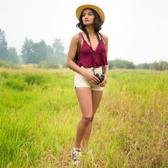
Review on Jacquard Procion Fiber Reactive Ounce by Carrie Spencer

Excellent if sometimes unpredictable results
I bought this kit to dye some white t-shirts that I have used as t-shirts over the past few years. The shirts had armpit sweat stains but I love the fabric and they fit so well I wanted to see if I could salvage them. Now all coloring websites tell you not to work with old, soiled clothes. This is probably cautious advice, which I'll get to later! I was willing to take risks, especially since I had learned to paint, in case I decided to do a bigger project later. What I love about this set is that it includes the printer's primary colors - cyan, magenta and yellow, as well as black - so you can mix your own colors. I only had to dye three shirts and could have bought three premixed colors instead of the four main colors. But I find it a bit limiting and wanted to have some fun mixing my own. This kit also includes enough soda to do about 5-6 spot washes (bucket method), but if you run out of water, Arm & Hammer Super Washing Soda is 100% baking soda and is available for a few dollars at the grocery store or pharmacy. . I dyed my shirts using a 5 gallon bucket dip method (I actually had a 4 gallon bucket for kitty litter). You can do this in the washing machine, but you'll need to use a lot more dye, soda, and salt, and you'll still have to watch the machine to make sure it doesn't start the rinse cycle before you're ready. I find it more economical and not much more time consuming to just do it in a bucket. For the first shirt, I tried an indigo color, a deep blue-purple. I mixed 3/4 tsp. fuchsia dye and 1 1/4 tsp. Place turquoises in a glass jar and add a little water to make a paste, then some more water to make a liquid color. I filled my bucket a little over halfway with water, added 2 cups of non-iodized table salt, stirred it to dissolve, and then added the dye. Finally I added my t-shirt which I had soaked through. After stirring for about 20 minutes, I mixed 1/3 cup soda with warm water in a glass jar and added 1/3 of it to the bucket, stirred for 5 minutes, added another 1/3, and stirred for 5 minutes. then stir the last third and another 5 minutes. Finally, I leave the shirt in the dye bath for another 45 minutes, stirring occasionally. I put it in the washing machine, ran the rinse cycle, then washed it in hot water with detergent and dried it. (This technique comes from pburch.net, an incredibly thorough coloring site.) You can see the result on the far left of the customer image I uploaded. This is hardly the indigo I was aiming for! Actually it was a happy coincidence because I was planning to dye one of the shirts purple and that's exactly what I did. But what went wrong? Well, I did a little research and found that turquoise is a particularly tricky dye. Procion paint cans say to mix the paint with cold water and I was wrong about that. My research has shown that the water should actually be *at least* room temperature, if not warmer for turquoise. I've even seen some suggestions to put the dye soaked cloth in the microwave to speed up the process! I didn't have the guts, but I was happy to try warm water with my second shirt. This time I put a bucket in the tub and filled it with warm or hot water, about 110 degrees. I also filled the tub with hot water to try and keep the bucket warm. In the second batch of turquoise, I used a lot more: 2 tsp. turquoise and only 1/4 tsp. Fuchsia colors. Otherwise, I proceeded in the same way as with the first shirt. The result is a very nice periwinkle color, not quite the rich indigo I was aiming for, but again a nice color that I'm very happy with. . It is recommended to use about 1 tablespoon of dye for a medium color or 2 tablespoons for a dark color per pound of fabric. The scale increases or decreases depending on the weight of the fabric. Each of my t-shirts only weighed 1/4 lb, so this suggests 1/4 tbsp for medium or 1/2 tbsp - 1 1/2 tsp - for dark. I've actually used more than that but gotten medium colors. ) For my final shirt, I wanted to break open a jar of yellow paint, so I chose green. From the first two rounds I definitely understood that mixing colors is an imprecise science. I'd rather have more turquoise than too much yellow (I love lime green but it doesn't suit my complexion at all) so I mixed in 2 tsp. turquoise with 1/2 tsp. yellow. This gave a very nice emerald, almost the shade I was aiming for! However, this shirt turned out to be stained and I can only conclude that there were some invisible stains or stains on the t-shirt that only became apparent when I dyed it. That's one of the dangers of working with old fabric! Incidentally, the traces of sweat on the shirts bothered me the most, but in all cases they were almost completely covered by the color. I highly recommend this set if you're willing to take a little risk with the color. It's definitely a matter of guesswork, and I've found that even testing the dye mix first on a small piece of paper towel, or simply observing the fabric in the dye bath doesn't really give a good idea of what the end result will be. looks like. It depends both on how well the fabric takes the color (and what technique you use etc.) and what proportions of color you use. But it was a lot of fun and I still have enough paint for many projects, especially when I refill my stash of turquoise.
- Nice packaging
- Can't remember
New products
Comments (0)
Top products in 🎨 Dyes
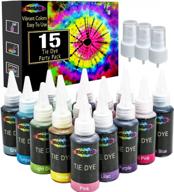
15-Color Mosaiz Spray Tie Dye Kit For Creative DIY Fabric Dyeing Activities Indoors Or Outdoors - Perfect Summer Fun For Kids And Adults

36 Review
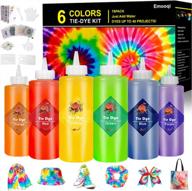
Emooqi Tie Dye Kits: Vibrant 6-Color One Step Set for Textile Craft Arts & DIY Projects

31 Review
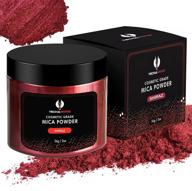
TECHAROOZ Shiraz Red Mica Powder For Epoxy Resin - 56G / 2Oz. Jar, 2 Tone Resin Dye Color Pigment Powder Ideal For Lip Gloss, Nails, Slime, Bath Bombs, Soap Making & Polymer Clay Colorant

12 Review
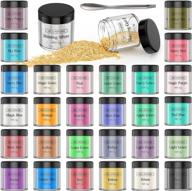
30 Color Mica Powder Pigment For Epoxy Resin - Natural Cosmetic Grade Glitter Colorant Pearlescent Powder For Painting, Soap Making, Nail Polish, Candle Making, Bath Bombs, Slime, And More - 5G Each

14 Review
Another interesting products

Mod Podge Plaid Stiffy Fabric Stiffener, Clear

14 Review

Threadart Premium 100% Cotton Quilting Fabric Bundle - 6 Fat Quarter Pastel Solids - No Duplicates - Full Size 18"X21" - Ideal For Crafting, Sewing, And Quilting Projects.

8 Review
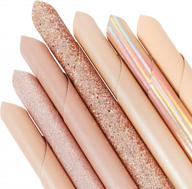
ZAIONE Gold Faux Leather Sheets : Gold Leather Grain Vivid Leather Sheets,7 Pcs 8X12 Inch A4 Mixed Bundle Leather,Gold Holographic Sparkle Texture Shiny Glitter Leather For Bows Earrings DIY Crafts

5 Review
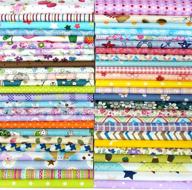
Misscrafts 50Pcs 12" X 12" Cotton Craft Fabric Bundle With Dot Pattern For Quilting, Sewing, And Scrapbooking Projects - Pre-Cut Quilt Squares For DIY Crafting

11 Review

